Hamarikyu Gardens: An Urban Oasis in Shimbashi
When one enters the urban oasis of Hamrikyu Gardens in the Shimbashi district it is impossible to fully escape the hubbub of the city. Towering office buildings surround the peaceful oasis of the park, which is yet another example of the exquisite Edo period gardens that still remain today. This park first served as leisure spot for members of the ruling class beginning with the Tokugawa clan. Later, after the Meiji Restoration, the garden became a detached palace for the Imperial family. Over the years it received significant damage from catastrophes like the Great Kanto Earthquake and the fire bombings of Tokyo in WWII. After the war the Imperial family gave the park to the city of Tokyo. This park is notable for the pond, which draws water from the bay. This is the only remaining seawater pond within Tokyo. The sluice gate opens and shuts with the rise and fall of the tide to regulate the water level. There are several different types of ocean water sea life in the pond, including black mullet, sea bass, gobies, and eels.
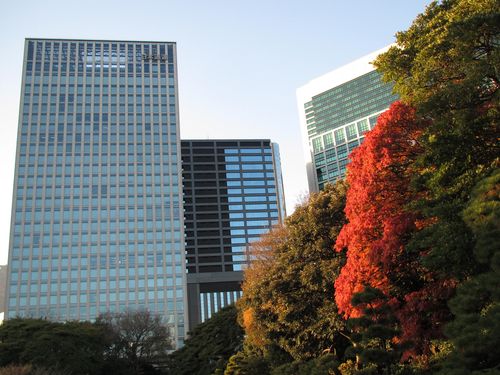
Beautiful nature exists alongside the urban towers of commerce that surround the garden.
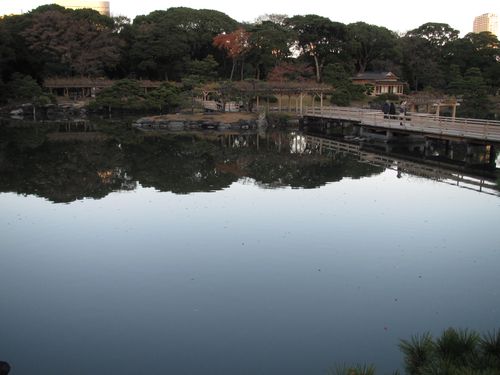
The Otsutaibashi, a 118 m bridge stretching over the ocean water pond, connects Kono-ji Shima with Nakajima.
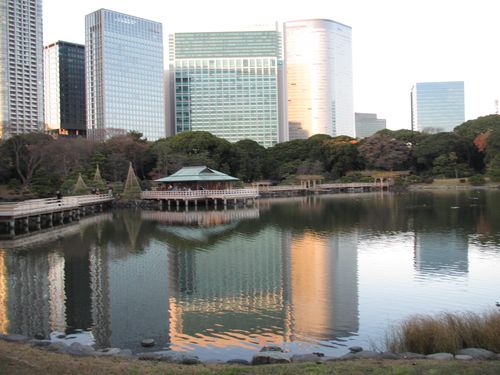
Here the Nakajima-no-chaya lies in the shadows of the modern office towers. It was originally built in 1704 and rebuilt in 1983.
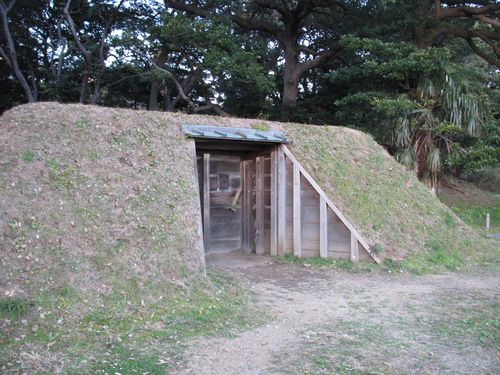
There are two duck hunting sites (Kamoba) in the garden, as well as this duck grave mound (Kamozuka) built to console the spirits of the ducks that were killed.
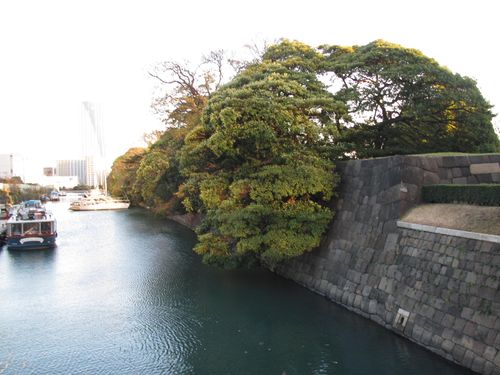
Here is the entrance to Hamarikyu Gardens and Tokyo Bay from which water is drawn for the pond inside.
This makes for a relaxing escape from the urban atmosphere of Shimbashi, which envelops the park. It is a perfect retreat for a lunchtime communing with nature.
Access
Toei O-edo Line Shiodome Sta. E-19, Tsukiji-shijo Sta. E-18 or Yurikamome Shiodome Sta. (7 minutes on foot)
JR or Tokyo Metro Ginza Line/Toei Asakusa Line, Shimbashi Sta. (10 minutes on foot) G-08, A-10
Boat: Suijo Bus (Asakusa—Hama-rikyu—Hinode-Sambashi)
Information
Hours: Open from 9:00 to 17:00 (Entry until 16:30) Closed: Year-end holidays (December 29 to January 1)
Entrance fee: ¥300 (65 and over: ¥150) (No charge for primary school children or younger, and junior high school students living or attending school in Tokyo) *20% discount for group of 20 and more
Related facilities: Hobai-Tei (25 persons or less)
Nakajima-no-ochaya (40 persons or less)
Free Guided Tours: (Japanese) Saturdays, Sundays and public holidays (Twice a day from 11am and 2pm) (English) Mondays 10:30am, Saturdays 11am
Patrick McCoy is American writer based in Tokyo who has been published in The Japan Times, The Daily Mainichi, The Asahi Shimbun, Tokyo Classified and Eye-Ai Magazine.
See also: 34 Japanese Garden Ideas
Looking for inspiration? ZenVita offers FREE advice and consultation with some of Japan's top architects and landscape designers on all your interior design or garden upgrade needs. If you need help with your own home improvement project, contact us directly for personalized assistance and further information on our services: Get in touch.
SEARCH
Recent blog posts
- November 16, 2017Akitoshi Ukai and the Geometry of Pragmatism
- October 08, 2017Ikebana: The Japanese “Way of the Flower”
- September 29, 2017Dai Nagasaka and the Comforts of Home
- September 10, 2017An Interview with Kaz Shigemitsu the Founder of ZenVita
- June 25, 2017Takeshi Hosaka and the Permeability of Landscape
get notified
about new articles
Join thousand of architectural lovers that are passionate about Japanese architecture